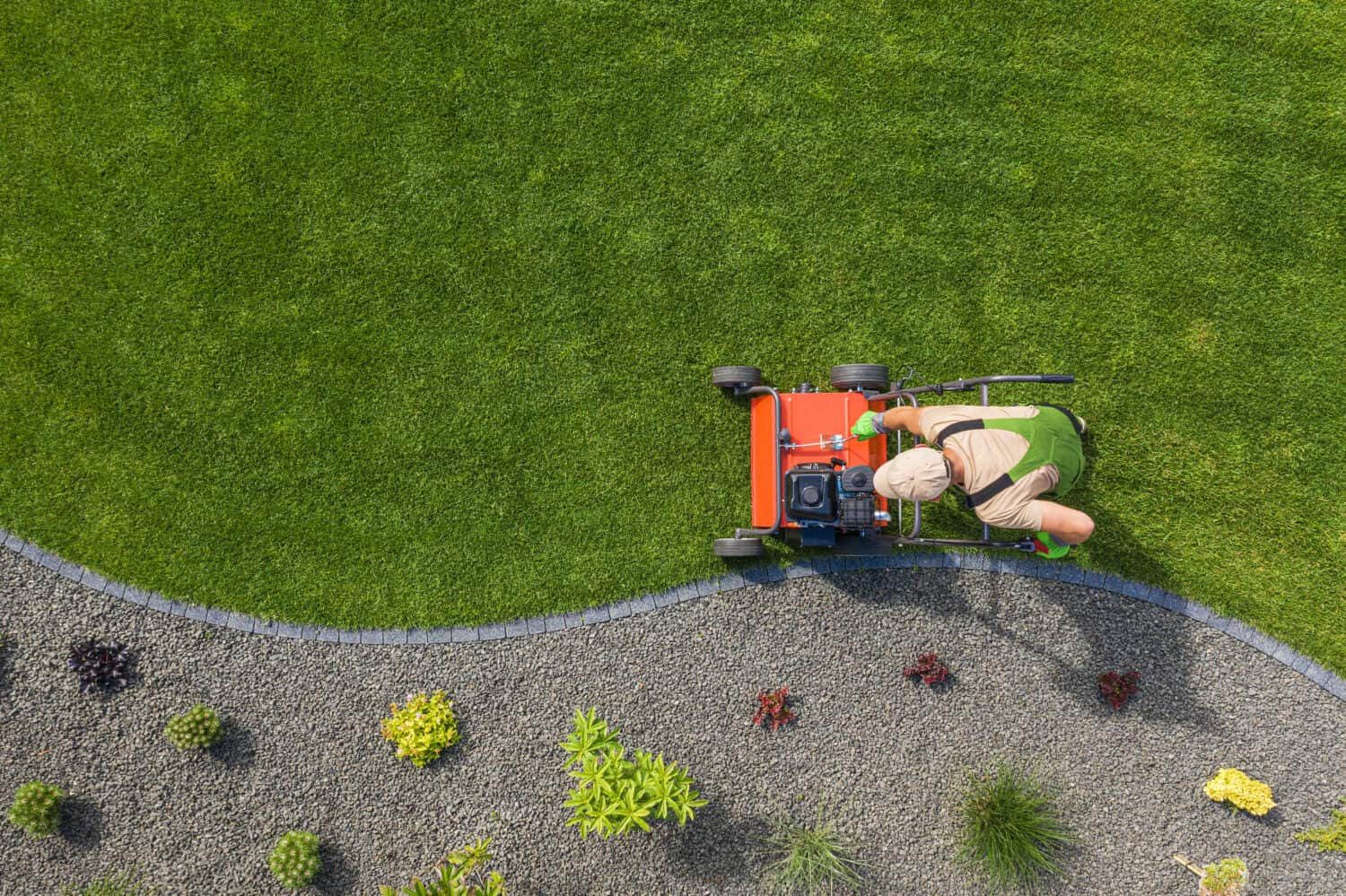Fall is just around the corner. As the weather turns cooler, the leaves change color, and some animals get ready to hibernate, there are things you should do in September for a healthy yard.
Here are seven lawn care tips to prepare your yard for the upcoming temperature change.
1. Removing Weeds
September is the perfect time of year to take care of weeds in your yard. The best time to dig up weeds is after rain on a wet day since the soil is more pliable and the weeds are easier to pull up from their roots.
If you can’t get a clean cut to the weed’s root, it’s a good idea to behead it. This stops weed seeds carried by the wind or rain from germinating. A useful tool for this method is a gardening fork with three prongs.

Removing weeds from the roots ensures the weeds don’t germinate during the winter.
©goldyrocks/iStock via Getty Images
2. Regular Mowing and Watering
In the summer, a lawn mower’s height is raised to reduce the stress and heat of your lawn. In the fall, reduce your lawn mower’s height to about 3 inches to promote deeper roots and tillering.
Mowing your lawn a little shorter in the fall will help keep it from clumping down under snow and leaves. But be careful not to cut the grass too short.
When it comes to watering your yard, consider watering it a few times before the frost sets in and the soil freezes. By doing this, you are helping your lawn prepare for the transition to winter. A tip is to water your yard in the morning to limit evaporation with lighter wind.
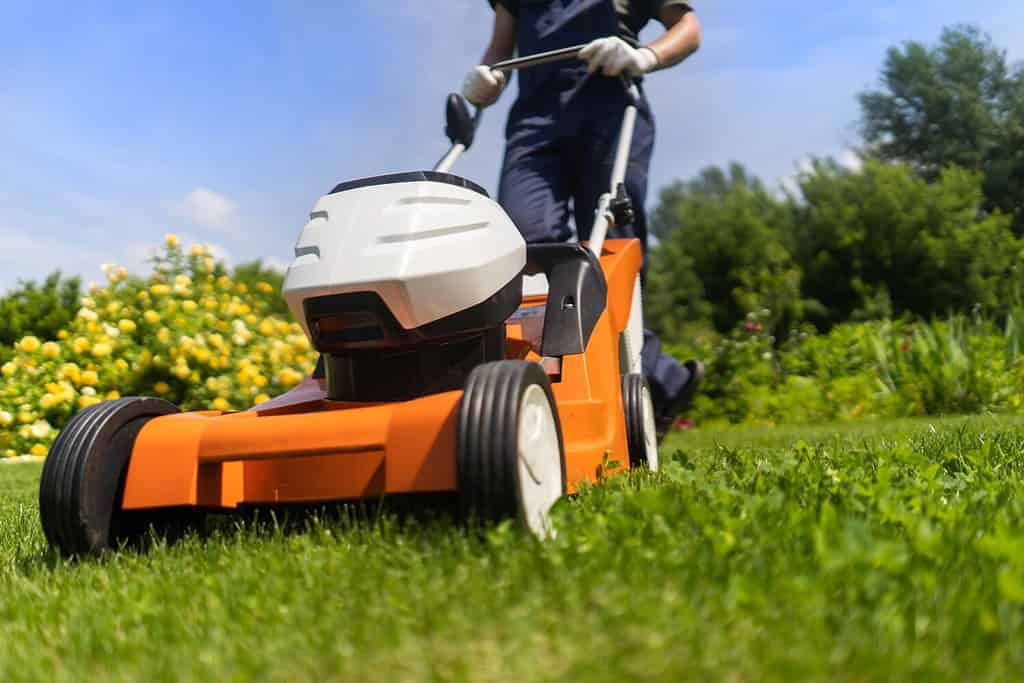
Reducing the lawn mower’s height promotes deeper roots.
©africa_pink/Shutterstock.com
3. Lawn Aeration
An important thing you should do in September for a healthy yard is to aerate the soil. Soil typically gets compacted over time, which can negatively impact how healthy your lawn is. So lawn aeration is when you let the soil breathe.
The main benefits of aerating your lawn include:
- Boosts your lawn’s health by getting air, water, and nutrients to the roots of the grass.
- Reduces soil compaction.
- Helps control thatch.
- Improves grass density.
- Improves drainage.
- Promotes stronger root growth.
- Reduces water runoff, which causes moss to develop.
- Prevents harmful pests and diseases.
There are many ways you can aerate your soil. The most common and easiest way is known as turf aeration. You can use a spading fork to poke holes in the ground. In addition, you can use aeration shoes, a spike aerator, or a hand aerator.
Core aeration is another aerating technique that involves perforating the soil with small, evenly spaced holes. This procedure uses a specialized machine called an aerator, which removes small plugs or cores of soil from the lawn. Core aeration allows air, water, and nutrients to penetrate the root zone more effectively.

Use a spade fork to poke holes in the ground to aerate the soil.
©iStock.com/Kolomiiets Iryna
4. Fertilize the Lawn
The fall season is the best time to fertilize your lawn, as it provides much-needed nutrients that help prepare it for the winter months and prepare it for the spring. A good fertilizer contains micronutrients, nitrogen, and lime, which all assist in adjusting the pH levels.
However, it’s important to avoid using fertilizer if it’s still hot during the month, as it will damage your grass. Wait until there is a slight drop in temperature before you fertilize your lawn.
4-6 weeks before the first frost date in your area, apply a slow-release granular fertilizer with high quantities of phosphorus to promote root growth. This guarantees that your grass is prepared to withstand the extremely cold winter.
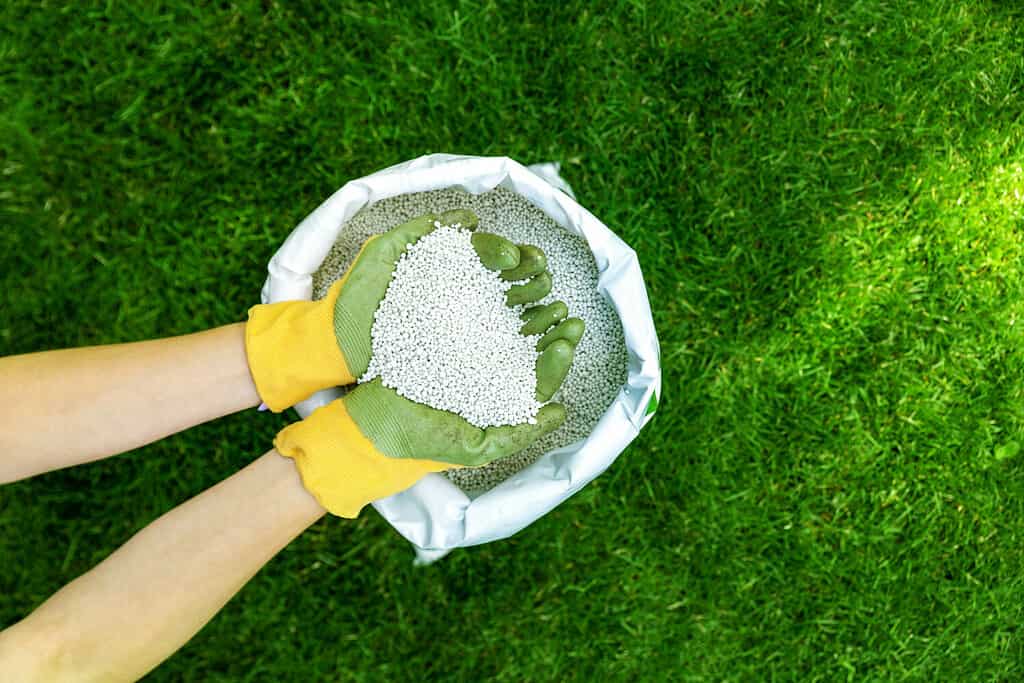
Micronutrients, nitrogen, and lime are all components of fertilizer that help to correct pH levels.
©ronstik/Shutterstock.com
5. Grass Seed
The best time to get your lawn looking new is in September. One way of doing this is through overseeding your lawn. The process requires no manual labor and is best done together with aerating your lawn.
Overseeding should be done during the day when the soil temperature is still warm, and the outside temperature is cooler. The method entails planting new seeds on top of an existing lawn. Once you’ve planted the seeds, water regularly but lightly until new grass grows.
It’s an excellent way to get lush-looking grass without destroying any existing grass or soil. It’s also the best choice for anyone who wants to treat grass naturally without using fertilizers or harsh chemicals.
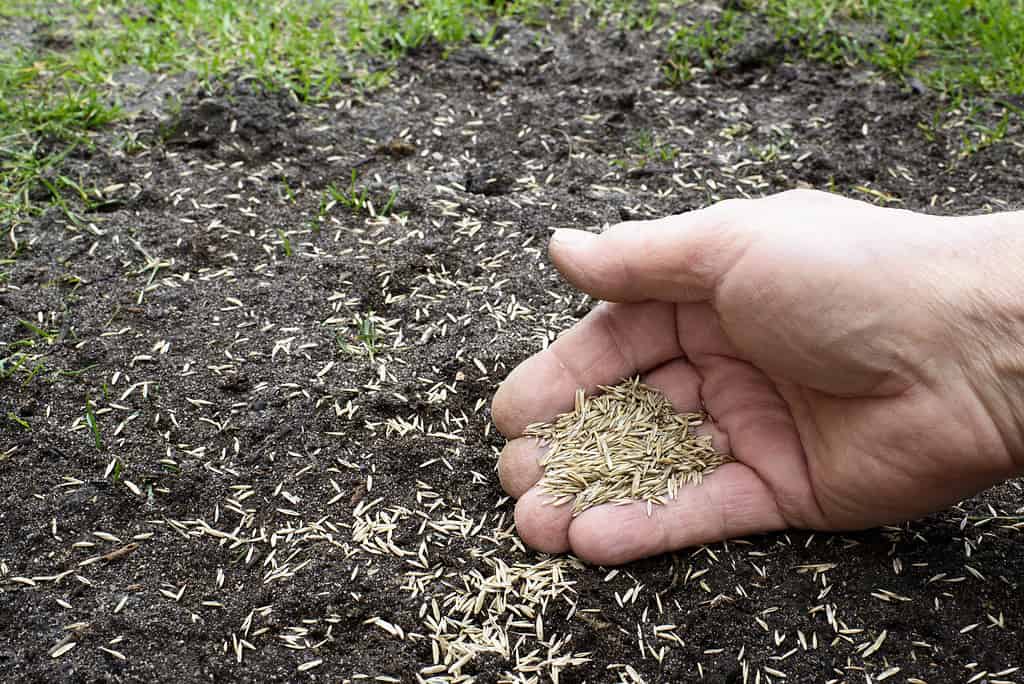
Overseeding is throwing new seeds on existing lawns for a luscious lawn in spring.
©iStock.com/
6. Cleanup
We’ve all heard of a spring cleaning, but what about a fall cleanup? September is the start of fall and is the best time to clean up your yard by removing debris and fallen leaves. This will help keep your grass healthy and prevent mold from growing.
If you have lots of leaves that have fallen from your trees, shred them into smaller pieces using a mulching mower. The smaller pieces of leaves can be strewn across your lawn to provide nutrients to the soil after breaking down.
In addition, cut back anything in the flowerbeds that have finished blooming or are infected.
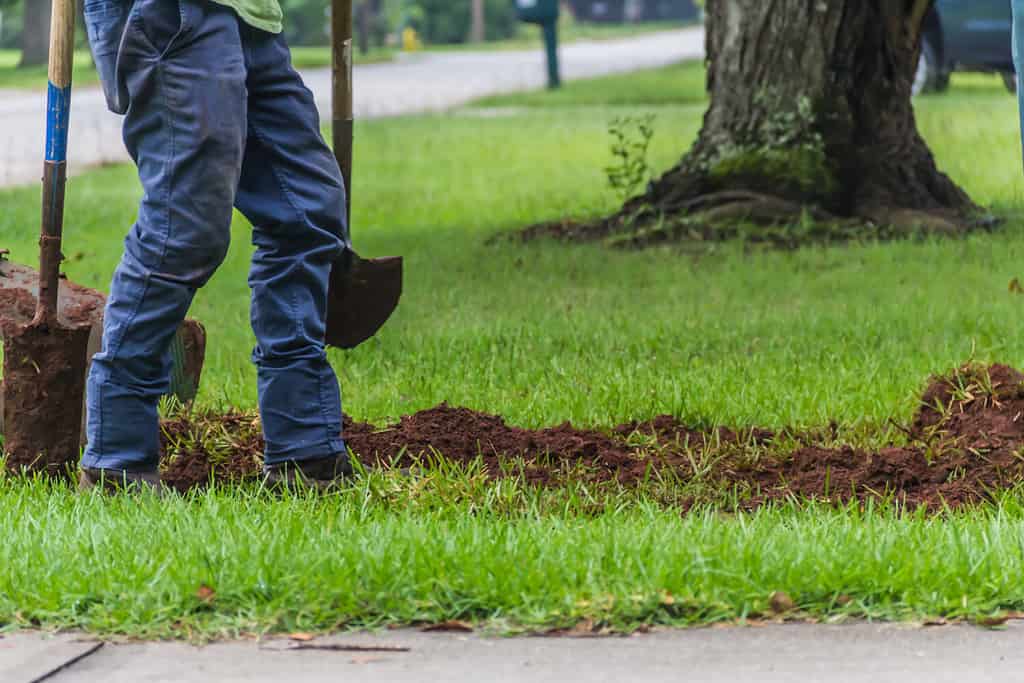
Clean up your yard from all debris and fallen leaves to prevent mold from growing.
©Will478/Shutterstock.com
7. Treat Your Lawn With Fungicide and Insecticide
Some areas in the U.S. still have very active summer insects like chinchbugs and fungi like gray leaf spots that are threats to your yard.
Chinch bugs (blissus leucopterus) appear nationwide when there’s extreme heat. Damage from chinch bugs shows up as yellow spots that eventually turn brown and die.
Gray leaf spots appear on leaf blades as round or oval-shaped tanned lesions bordered in purple or brown. This fungal disease is caused by the fungus Pyricularia grisea and is prevalent in warm and humid regions in the U.S.
To prevent these issues, treat your lawn with fungicide and insecticide in September as a preventative measure or treatment.
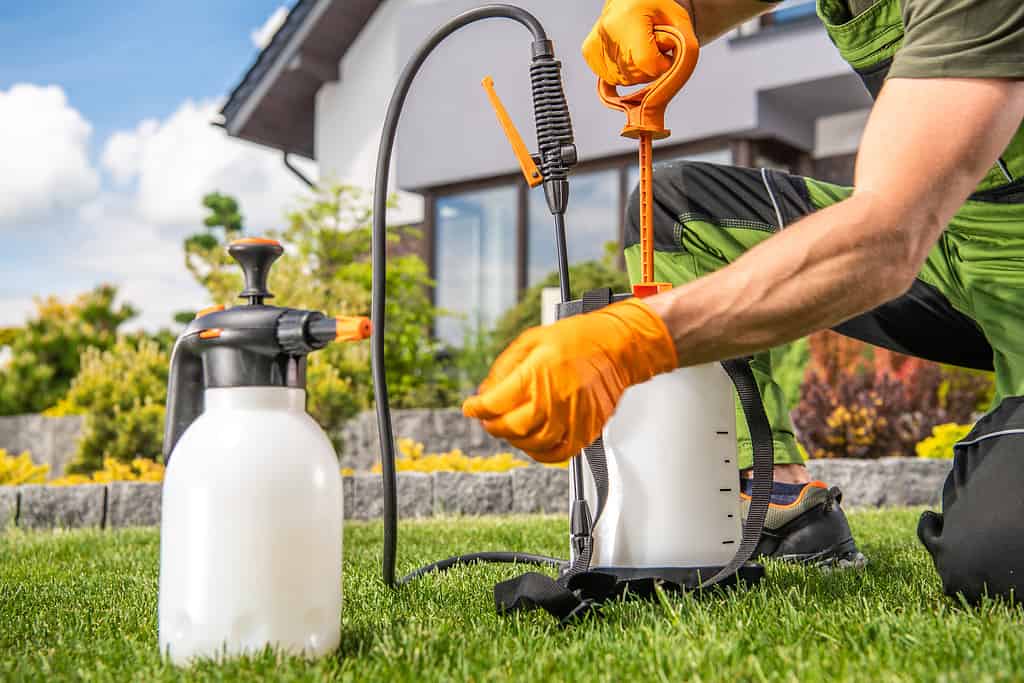
Fungicides and insecticides are perfect as treatment or preventative measures for summer insects and fungi.
©welcomia/iStock via Getty Images
Final Thoughts
September is the best time to get things done to maintain a healthy yard. Don’t leave lawn maintenance and care for too late when the cold winter months start. Preparing your lawn in time will allow your yard to establish lush, thick, healthy grass in the spring. So take advantage of the cooler temperatures and rejuvenate your yard!
Summary of Things You Should Do in September for a Healthy Yard
| Number | Tips |
|---|---|
| #1 | Remove weeds from the roots. |
| #2 | Mow your lawn shorter and water regularly before the frost sets in. |
| #3 | Aerate your lawn to let the soil breathe. |
| #4 | Fertilize your lawn to adjust pH levels. |
| #5 | Overseeding ensures lush grass in the spring. |
| #6 | Clean up your yard by removing fallen leaves and debris. |
| #7 | Fungicides and insecticides treat and prevent issues from occurring in the fall. |
Thank you for reading! Have some feedback for us? Contact the AZ Animals editorial team.

